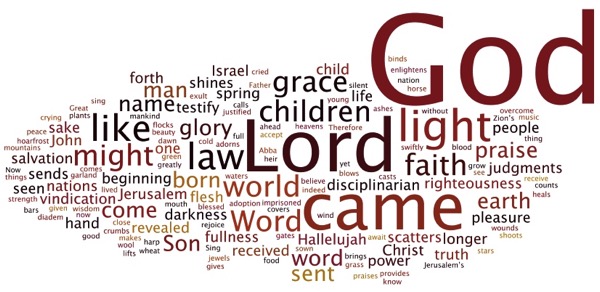1 Christmas
Isa. 61:10-62:3 • Ps. 147 or 147:13-21 • Gal. 3:23-25; 4:4-7 • John 1:1-18
“The law was our disciplinarian until Christ came” (Gal. 3:24). The suggestion, now that faith has come, that discipline and obedience are summarily cast out is seriously and dangerously mistaken. Is not faith the obedience of faith? “So the law is holy, and the commandment is holy and just and good” (Rom. 7:12). Although variously interpreted in the time of Jesus, the sanctity of divine law was not in question. Rather, the One who was and is the fulfillment of the law has come, and thus the law’s fulfillment comes to Christ’s followers, most profoundly, through the efficacy, force, and virtue of his life. Christ the new law is new life, whereas the old disciplinarian tells an old and troubling truth: “I cannot do it” (Rom. 7:18). Who, then, will rescue me from this body of death, this flesh that consents to the good and yet so easily succumbs to petty wrongs and even vile and utter depravity? Who, we ask?
“But when the fullness of time had come, God sent his Son, born of a woman, born under the law, in order to redeem those who were under the law, so that we might receive the adoption as children” (Gal. 4:4-5). Although born under the law, he remained sinless with respect to the law. And yet his obedience was not slavish, but the free consent of a Son to a loving Father. “I seek to do not my own will but the will of him who sent me” (John 5:30). It is precisely the Son’s willing consent that constitutes our redemption, for we are caught up into his life, and the righteousness intrinsic to his role as the natural Son of the Father is imputed, by grace, to us. “We receive adoption as children” (Gal. 4:4). Giving himself as a ransom for many, he makes many sons and daughters.
Who does this work? Christ. How? I do not know. Twenty-nine years of preaching and yet I cannot unravel the mystery and wonder of how we become children of God in union with Christ. All theories of the atonement are, in the end, no more than a glimmer, a view from a cleft in the rock.
The righteousness of Christ, his perfect obedience to the law and his loving consent to the Father’s will, may be compared to a garment. He is vested as the Son of the Father, and we are gathered under the shadow of the Son’s flowing robes. “My whole being shall exult in my God; for he has clothed me with the garments of salvation, he has covered me with the robe of righteousness, as a bridegroom decks himself with a garland and a bride adorns herself with jewels” (Isa. 61:10). How is the young man so noble? He decks himself with a garland. How is she a beauty to behold? She adorns herself with jewels.
Having put on Christ, we have put on his righteousness. We draw, moment by moment, from the well of his fullness, grace upon grace (John 1:16). And yet we fall and stumble and have much to learn from law and wisdom and good counsel. We repent and return and realize again that we are sons and daughters of God. Equally important, and difficult to admit, we are made not only righteous but beautiful.
Christ is the garment of our salvation. He is the water in the garden of human life that causes righteousness to spring forth. He is the light that enlightens everyone. The eye of faith can see that the perfect law of Christ accomplishes not only a moral and spiritual transformation but an aptness and integration, a new form of Christ’s beauty.
Look It Up
Read Isa. 61:10. He clothed me.
Think About It
Take your garlands and jewels.
TLC on Facebook ¶ TLC on Twitter ¶ TLC’s feed ¶ TLC’s weblog, Covenant ¶ Subscribe










